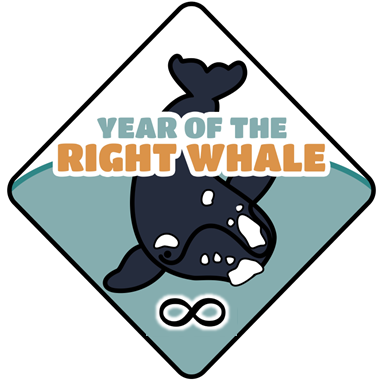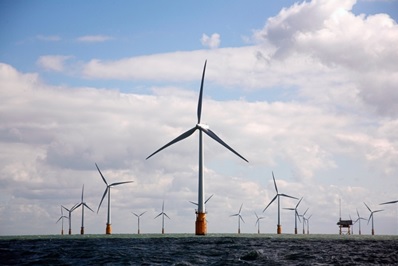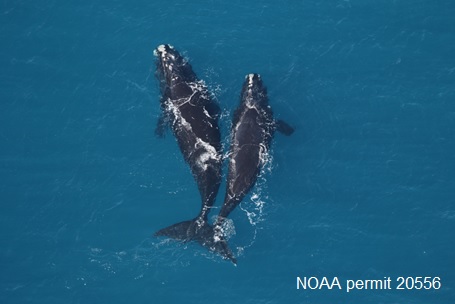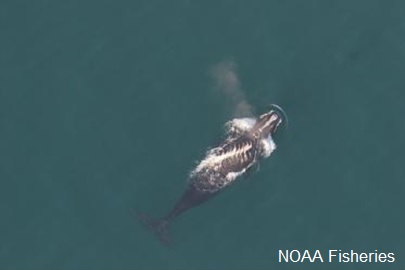Guest blog post by Intern Ashley Goland
If you’ve read our blog posts before, then you probably already know a thing or two about right whales. You may have learned that strikes from vessels and entanglement in fishing gear are some of the biggest threats to these beautiful animals. However, what you may not know, and what I focused my research on with Blue Ocean Society this summer, is that humankind’s quest for renewable energy could become a challenge for right whales, too.
Wind farms have proven a very valuable source of clean, green energy for years. As such, people are interested in making more farms, but there’s only so much space available for them on land. A potential solution to this has been playing out in Europe with their expansion into offshore wind farms. Installing wind turbines in the ocean means stronger and less turbulent winds— ideal conditions for harnessing wind energy. On the list of cons, though, are unique conditions for the corrosion of the turbine machinery and a laundry list of poorly understood effects on local wildlife. This last point becomes especially concerning regarding the new Vineyard Wind project, which will share its Massachusetts territory with the migratory path of critically endangered North Atlantic right whales.
There are many ways that offshore wind farms could impact the right whales and other animals nearby, beginning with disruptions from sound. Whales are extremely sensitive to noise. They use it to hunt, communicate, avoid danger, and find their way in their sprawling marine habitat. The process of constructing a wind farm makes a lot of noise, and this can upset regular whale behavior, put them under stress, or even cause physical damage to their most important sense. Another issue is the number of boats that would be shuttling back and forth to assemble the project, and later, to maintain it. Right whales are highly prone to being hit by boats, and Vineyard Wind expects to need an average of twenty-four boats taking numerous trips each day to build the farm.
Noise and boat traffic are two fairly direct effects. A less obvious and less easily measured problem with placing wind turbines in the sea is the way that they would change the habitat around them. The new structures could drive out certain species or invite others in, which would disrupt the food chain that usually exists in the area. The health of any North Atlantic right whale is linked tightly to the health of its habitat, so it is extremely important to make sure that they have a reliable place to live. Some of the animals that are known to colonize offshore wind farms, like mussels, consume the same food items as the right whales. If these species followed the Vineyard Wind project into the depths, right whales might not be able to find as much to eat as they need. When right whales don’t have a healthy supply of food, they aren’t as good at reproducing, and in a species with only 350-400 individuals left, they need all the babies they can get!
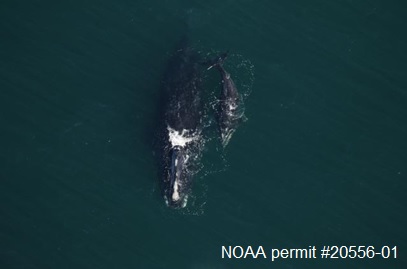
As top predators, whales play important roles in the ecosystems they’re a part of. Their presence keeps populations of prey in check, and they redistribute vital nutrients from the deep ocean to the surface when they poop. Plants and other animals can then use these nutrients to keep the ecosystem going. Without whales, this delicate balance would almost certainly fall apart. For this reason, it’s crucial for organizations to think deeply about every effect an offshore project might have on whales and their habitats before it is attempted, and we need more scientists to closely study how wind farms can interact with the marine world. The fate of the North Atlantic right whale may very well depend on it.
Take Action
- Keep up with the Year of the Right Whale blog for ways to help
- Become a Host for Booth in a Box to spread the word about Right Whales
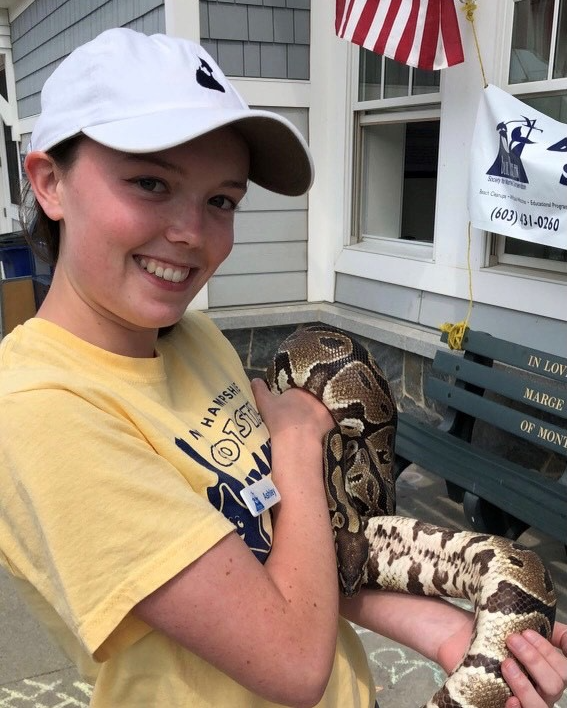
Ashley Goland was a 2021 summer intern for the Blue Ocean Society. She spent most of her time at our Blue Ocean Discovery Center at Hampton Beach. There, Ashley was able to spend time with many animals in our tanks, along with occasional surprise visitors like Montey the ball python! She was also able to spend some time out on the water with Granite State Whale Watch, where she observed marine animals in their natural habitat. Ashley conducted her summer research project on Vineyard Wind, and presented her findings at our intern symposium this past August. We wish her luck this year at Stonybrook University!
